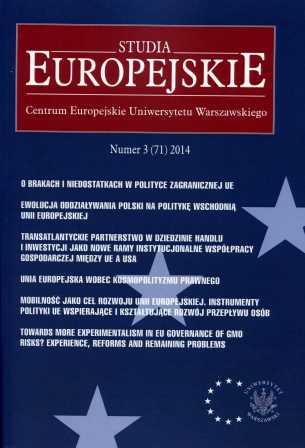Mobilność jako cel rozwoju Unii Europejskiej. Instrumenty polityki UE wspierające i kształtujące rozwój przepływu osób
Mobility – A European Union’s Development Goal. EU Policy Instruments Supporting the Development of Free Movement of Persons
Author(s): Katarzyna Wojdełko, Agata DziewulskaSubject(s): Politics / Political Sciences
Published by: Centrum Europejskie Uniwersytetu Warszawskiego
Keywords: European Union; Policy
Summary/Abstract: Although freedom of movement of persons has been considered one of fundaments of the European Communities ever since their formation, mobility had never before reached the current level. What encourages the migration are in the fi rst place: the size of the European Union with its 28 states, economic differences between states and so few obstacles. Data collected in 2012 indicates that about 2,5% of EU citizens live in an EU member state other than their country of origin. However, the official data focuses on permanent movement of workers, while seasonal migration and migration for educational purposes is not included which biases the enquiry substantially. Statistics also show that the internal dynamics of mobility within the EU has grown lately and is bigger than the inflow of non-EU migrants. The greatest movement within EU was observed after the 2004 and 2007 enlargements, when signifi cant number of people from new member states migrated to the old member countries. Migration related to the XXI century enlargements posed the biggest so far economic and social challenge for the receiving states, countries of origin as much as for the EU institutions. The focus of this article is on the effects of internal migration, obstacles still existing in full implementation of free movement of people as provided for in the EU law, as well as on the existence of the EU policy related to accommodation of the effects of migration enabled and encouraged within the EU. The study leads to conclusions on the inconsistency of actions of the EU while there being several initiatives and programmes in operation aiming to facilitate both the mobility and the effects the movement of EU citizens causes.
Journal: Studia Europejskie
- Issue Year: 18/2014
- Issue No: 3 (71)
- Page Range: 93-114
- Page Count: 22

